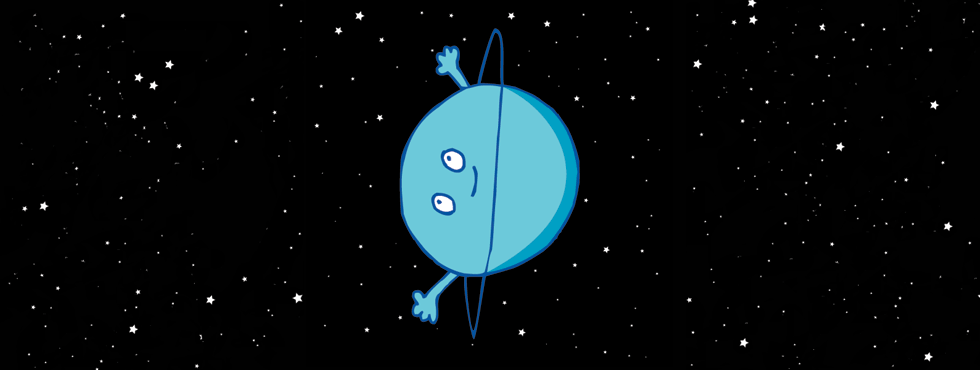

Uranus is, in many ways, the outsider in the solar system. True, one could argue that Pluto faced a bit more adversity, what with being “demoted” to a dwarf planet and all, but consider all of the people who rallied to defend the tiny dwarf when it was declassified as a planet. Sadly, it’s unlikely that Uranus would have such heroic defenders if it ever faced a similar crisis.
As the seventh planet from the sun, Uranus is rather far from our own pale blue dot (it takes 84 Earth-years for it to travel around the sun one time), couple this with the fact that Uranus is one of the smaller gas giants (it’s the third largest gas giant in our solar system), and it’s easy to understand why Uranus is the outsider in our neighborhood.
However, compared to the Earth, Uranus is far from a “lightweight” in the solar system. Uranus has a diameter that is four times that of the Earth; the mean radius of Uranus is 15,792 miles (25,362 kilometers). But if you ever decided to take a walk around the equator of Uranus (not a good life choice, as you would freeze and die a horrible death), you would have to travel 99,018 miles (159,354 km). Additionally, although this feat would be extremely impressive, it is also nearly impossible, as Uranus has no solid surface.
Uranus is also significantly more massive than our planet. It weighs some 86 septillion kilograms (just under one trillion trillion trillion). That makes this icy world 14.5 times as massive as our own home. On top of this, Uranus boasts its own ring system! Although this ring system is not nearly as impressive as Saturn’s, it is better than our own (we don’t have one, unless you count all of our “space junk” as rings). However, the rings around Uranus are rather small, and are made up of particles that are smaller than a meter. Only two of the 13 rings are larger than 1 km (six miles) across.
Planet Profile:
Mass: 86,810,300,000,000,000 billion kg (14.536 x Earth)
Equatorial Diameter: 51,118 km
Polar Diameter: 49,946 km
Equatorial Circumference: 159,354 km
Known Satellites: 27
Notable Satellites: Oberon, Titania, Miranda, Ariel & Umbriel
Orbit Distance: 2,870,658,186 km (19.22 AU)
Orbit Period: 30,687.15 Earth days (84.02 Earth years)
Surface Temperature: -197 °C
Discover Date: March 13th 1781
Discovered By: William Herschel